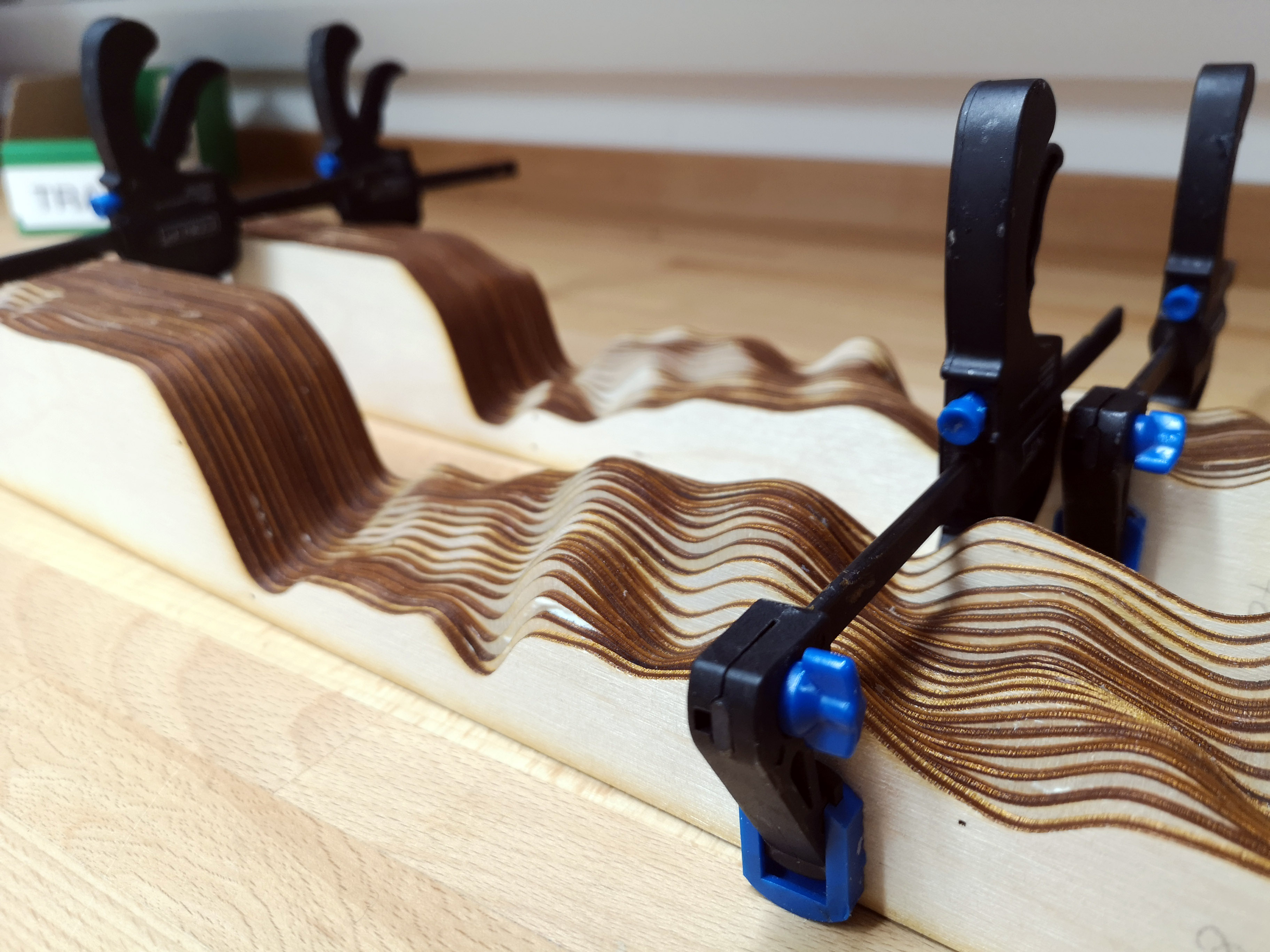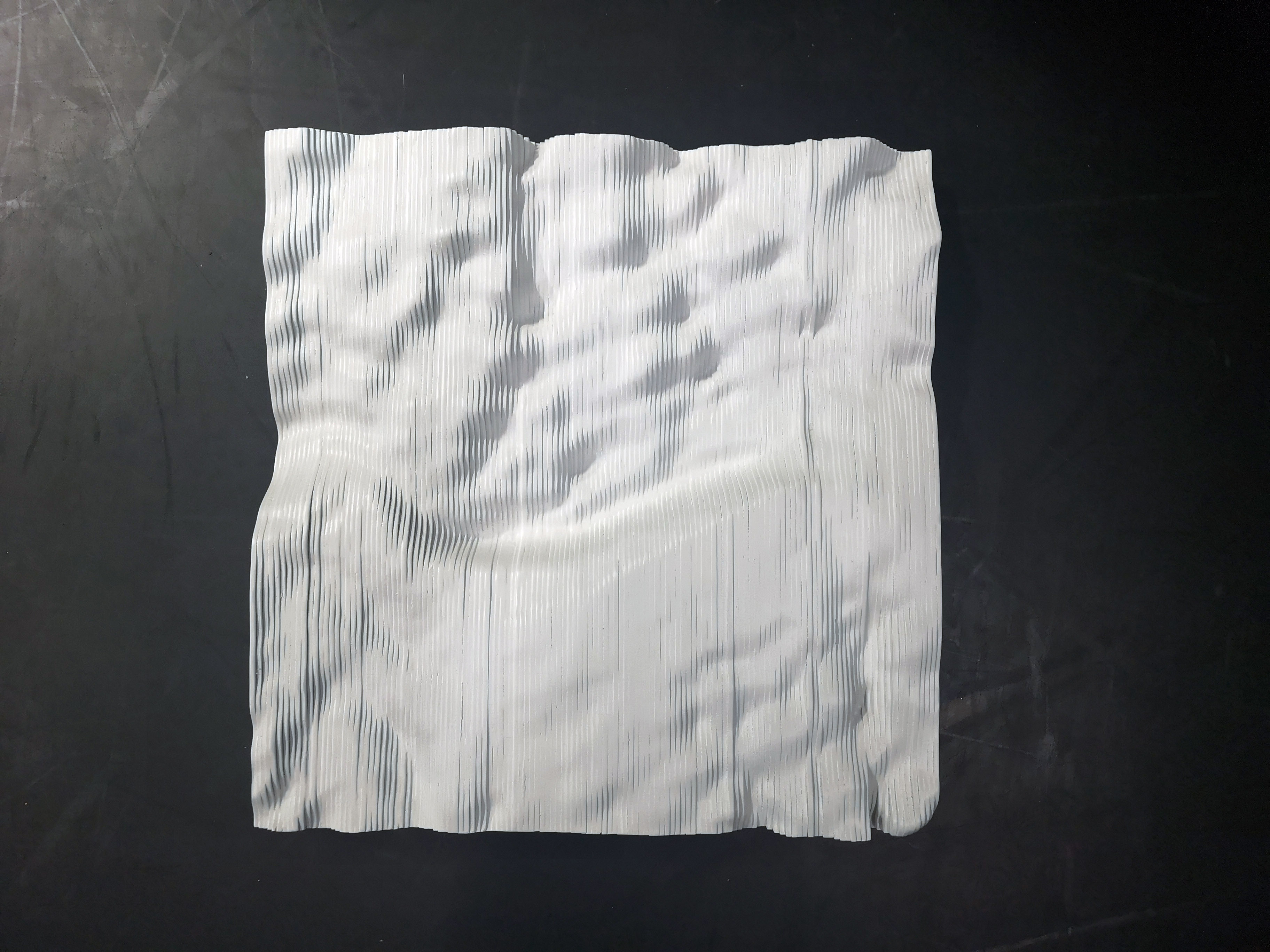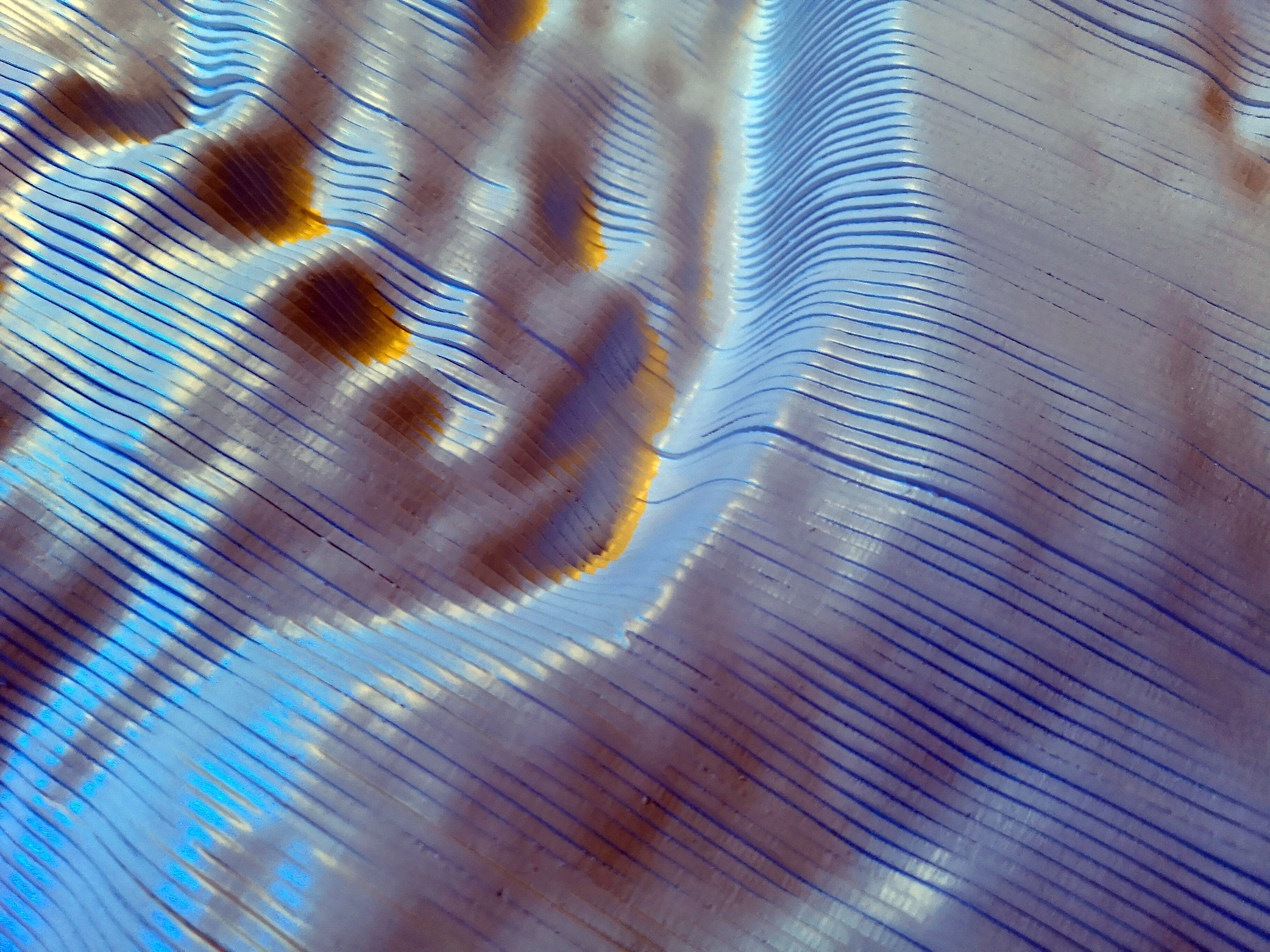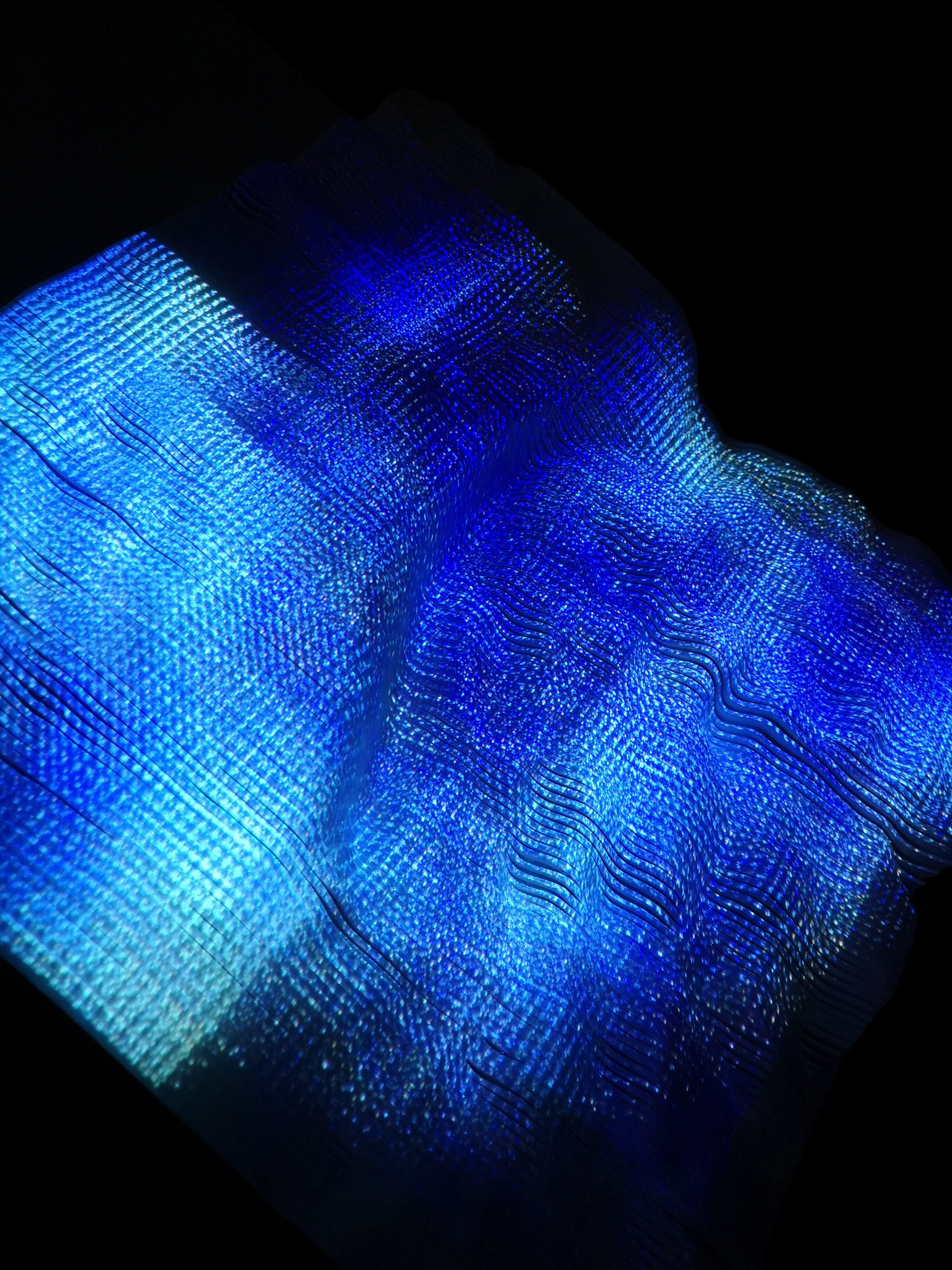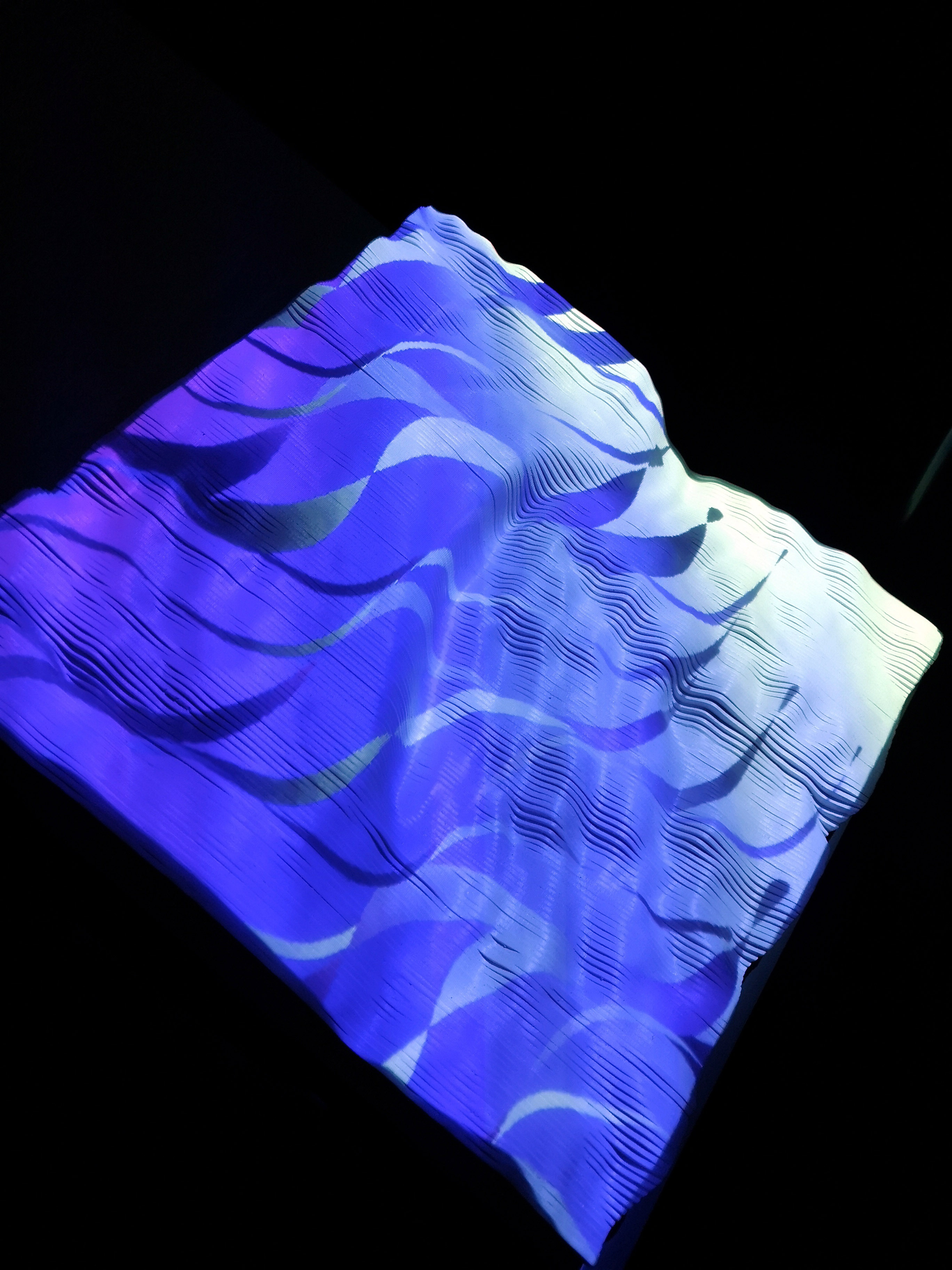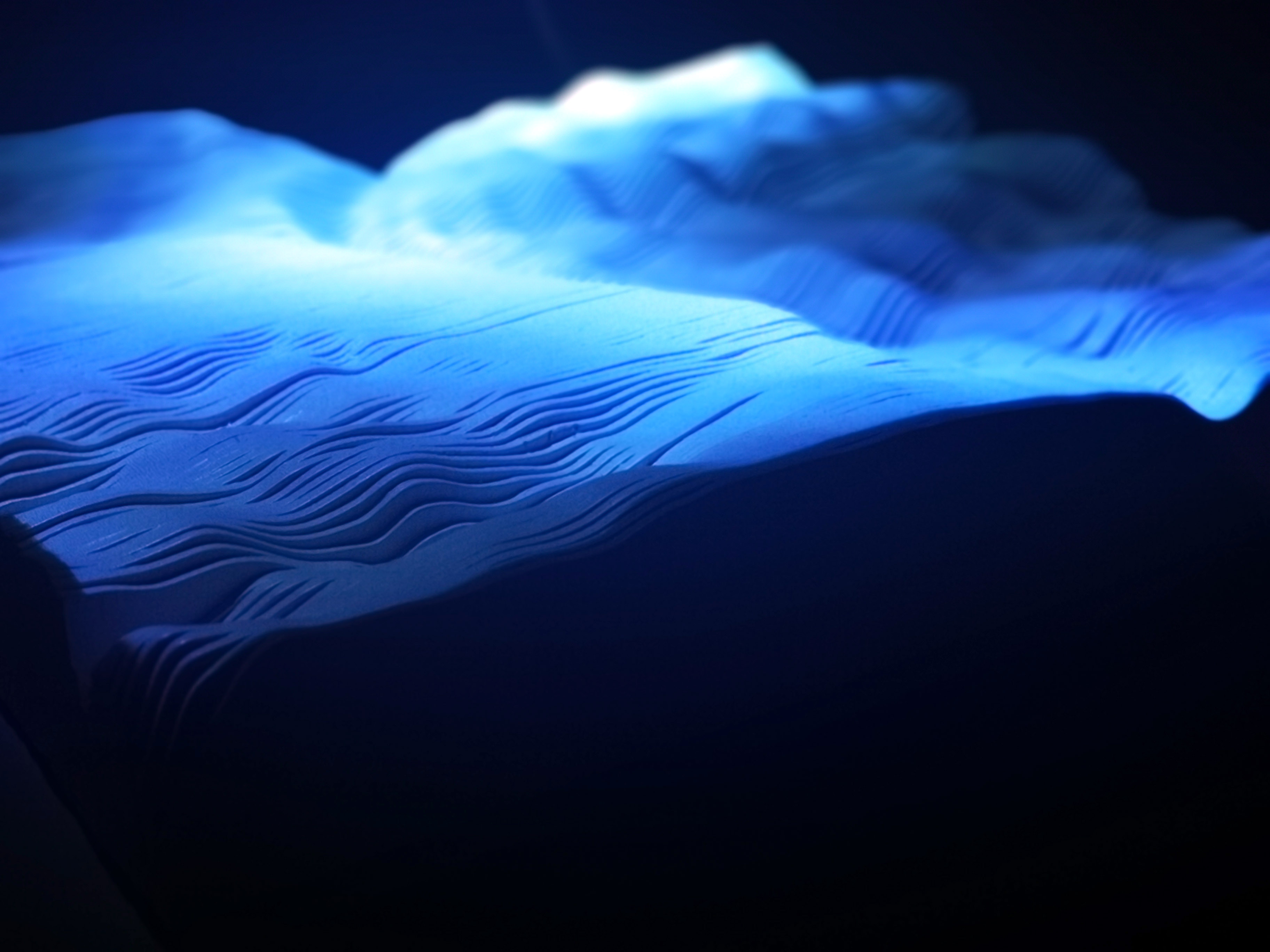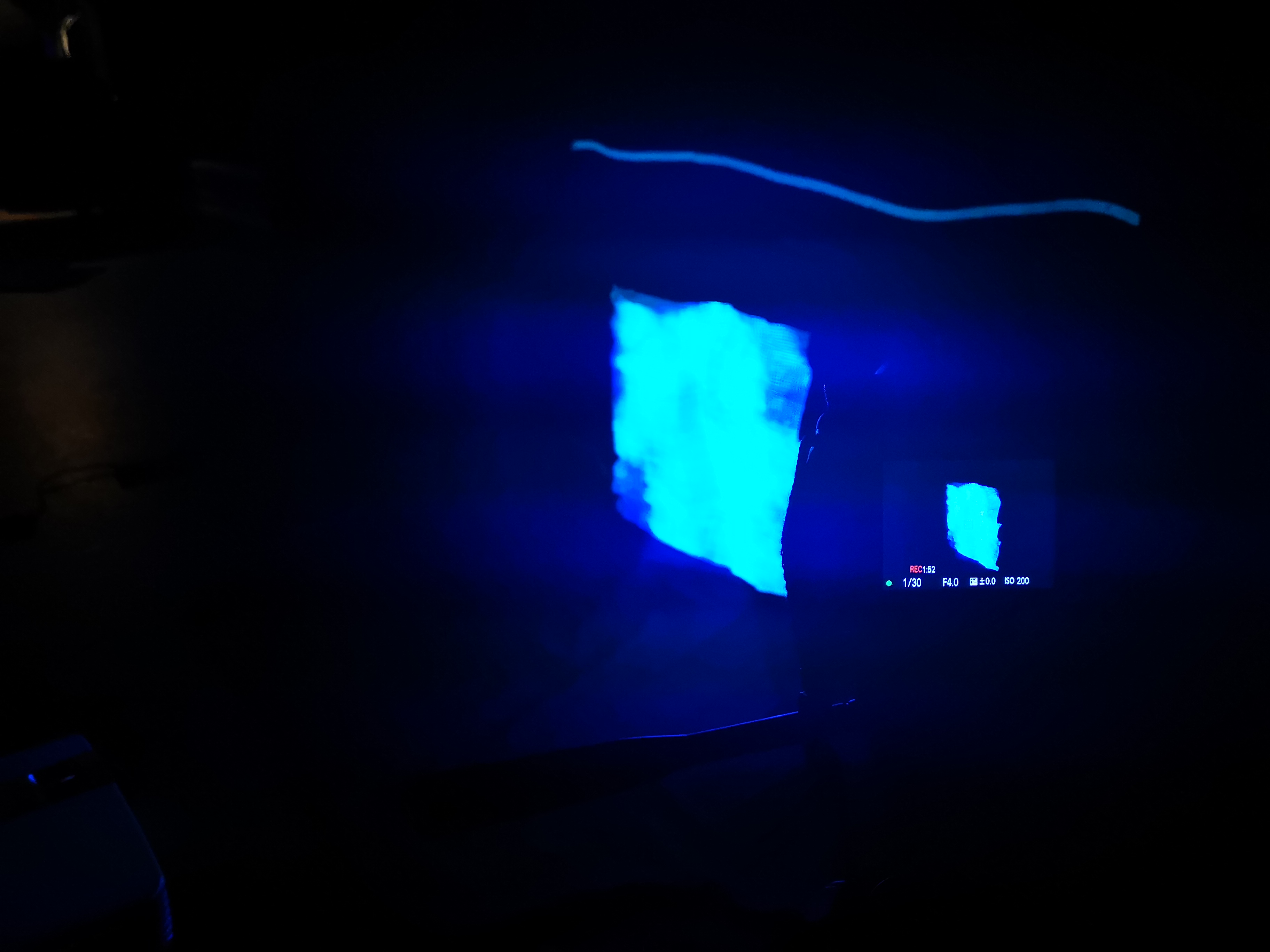243 days
The generative installation is a visual exploration of surface and mapping of Venus. It investigates the digital aesthetics of the planet. The surface was modelled by NASA images of Venus.
produced by: Elina Virdziniece
Introduction
Visually for this work I was inspired by Venus surface, radar mapping and mapping of Venus.
“Satellite radar provides imagery of the surface morphology by using the physical properties of wave reflection. Long wavelength microwaves are used to penetrate the thick, cloudy atmosphere of Venus and reach to the surface. Different surface features reflect waves with different strengths of signal, producing images from which the maps are constructed.” (Revolvy, n.d.)
Concept and background research
The installation is not a portrait of the planet but instead I was trying to create an effective visual experience through code which would challenge my technical skills and also fit within gallery space because of the getLerped pop-up exhibition.
Technical
The generative moving image was programmed in OpenFrameworks (C++) with ofxPiMapper addon. In my code I used a lot of loops and sin function to create smooth motion and gradient colours. All together there are 6 scenes – 1. Perlin Noise, 2. Gradient, 3. Wave, 4. Screen Gradient, 5. Radar, 6. Lines.
The surface was J. Pepin Gaste idea, she generated the Venus surface using Fusion 360 together with NASA data imagery. The ply-wood model was then laser cut and we glued the pieces together. To finish it the surface was coated with latex paint.
Future development
Although I am happy with the outcome in the future I would like to create the surface in bigger size and find a way how to map the code more precisely instead of just using a quad in ofxPiMapper.
Self evaluation
I am satisfied with the outcome, but this installation definitely survived a lot of issues which has prepared me better for future projects. For example - not being able to compile separate sources together with ofxPiMapper, problems with json file, transferring the code from windows to mac and in the end technical difficulties like projectors not working the way we needed them to etc.
References
Sites.google.com. (n.d.). HSB Gradients (all in one example) - 【oF】openFrameworks. [online] Available at: https://sites.google.com/site/ofauckland/examples/hsb-gradients-all-in-one-example [Accessed 1 Feb. 2019].
Lieberman, Z. (n.d.). ofBook - Animation. [online] Openframeworks.cc. Available at: https://openframeworks.cc/ofBook/chapters/animation.html [Accessed 1 Feb. 2019].
Lieberman, Z. (n.d.). Gradient fills for rects. [online] openFrameworks. Available at: https://forum.openframeworks.cc/t/gradient-fills-for-rects/18184 [Accessed 1 Feb. 2019].
Revolvy, L. (n.d.). "Mapping of Venus" on Revolvy.com. [online] Revolvy.com. Available at: https://www.revolvy.com/page/Mapping-of-Venus [Accessed 1 Feb. 2019].
YouTube. (2017). Zach Lieberman | Poetic computation. [online] Available at: https://www.youtube.com/watch?v=bmztlO9_Wvo&t=384s [Accessed 1 Feb. 2019].

































































